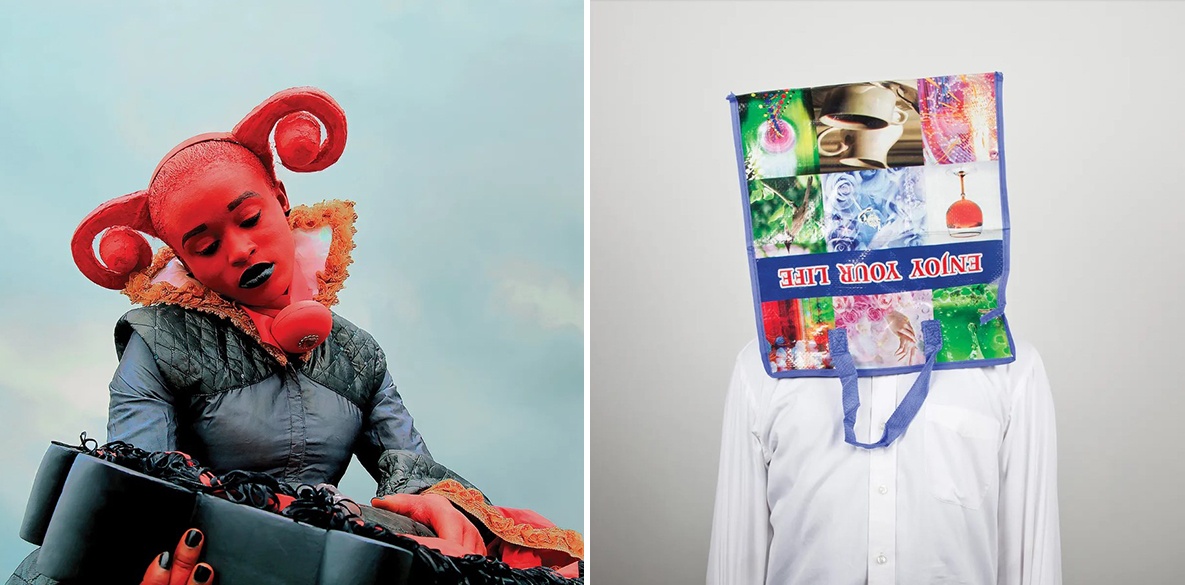This is the last article you can read this month
You can read more article this month
You can read more articles this month
Sorry your limit is up for this month
Reset on:
Please help support the Morning Star by subscribing here
WE’RE used to seeing photographs and photographic reportage on Africa but invariably through the viewfinders of privileged white individuals.
Rarely do we see the continent through the lens of black and indigenous photographers, and the radical and fascinating book African Cosmologies offers a welcome counterview.
Based on work made from multiple perspectives over 60 years, the book and its related exhibition and art programmes have been put together for the FotoFest Biennial 2020 and it presents the work of 33 artists, living and dead.
Lead curator Mark Sealy has a special interest in the relationship between photography, social change, identity politics and human rights. His recent book Decolonising the Camera, published by Lawrence & Wishart, focused on the racial politics at work within photography, raising issues of race and representation, the legacies of colonialism and the importance of decolonising institutions.
African Cosmologies continues that line of thought. In it are the widest range of styles, distinct methodologies and subject matters, with most of the photographers challenging perceptions of Africa and of photography itself.
With such a varied, complex and daring mix of perspectives, artists naturally adopt profoundly distinct approaches. Here, studio-based conceptual methodologies meet photo documentary and journalism, while poetic or fantastical perspectives are allied with direct calls to activism and resistance.
Each artist is represented by a careful selection of images and a concise essay about their approach, with many informed by first-person accounts. Working in a wide range of media including art and documentary photography, installation, video, text and image, mixed media and sculpture, their projects focus on intersecting aspects of the social, economic, and historical factors that shape their world views.
Themes of liberty, rights, representation, class, gender and sexuality, activism and conflict, flight and migration, racism, integration, the environment and the building of postcolonial nations are all present.
Through examples of African photography and art, cultural critic Olu Oguibe examines the ways that photography is just as subjective as other arts and, when approached uncritically, is used to reinforce the preconceptions, interests and prejudices of its makers.

In her report from Bamako, art historian, critic and curator Christine Eyene traces a path through a diverse range of artists and projects, illuminating shared concerns of identity, self-representation, critique and optimism, while Faisal Abdu’Allah negotiates cultural displacement within the black British community.
In one of his images, a pristine gold-plated barber’s chair serves as a flourishing space for conversation, activism and care and Abdu’Allah, who maintains his own barber’s shop in addition to his art practice, understands the various roles the barber plays as hair expert, storyteller and therapist.
The barber’s chair is the locus of this exchange. Put on a pedestal and plated in gold, it becomes a symbolic object and a status symbol divorced from its proletarian origin.
Blazing Century, the first instalment of a multi-faceted art project, was conceived and developed by French-Nigerian Oxford-based artist Wilfred Ukpong. Each image in the series — titled BC1 to BC10 — is site-specific and set within a geographical location, often one embroiled in sociopolitical and environmental issues. Filtered through a fictional and futuristic lens, it redefines art’s role in building and shaping a future world.
Table Manners (2014-16) is the work of artist Zina Saro-Wiwa, who filmed individuals in the Niger Delta eating a traditional meal. As they eat, the subjects occasionally acknowledge the camera, looking up from their plates towards an assumed viewer as guest at their meal.
Eritrean photographer Dawit L Petros, in his series In the Stranger’s Notebook, chronicles a journey across Africa, evoking alternative notions of migration that take place within the continent. His aim is to counter popular narratives of an ever-present desire of Africans to leave their homelands.
Embracing art, photography and political commitment, this is a riveting book that challenges many prejudicial concepts about Africa, photography and humanity as a whole.
African Cosmologies: Photography, Time and the Other is published by Schilt Publsihing in conjunction with Fotofest, £45.












